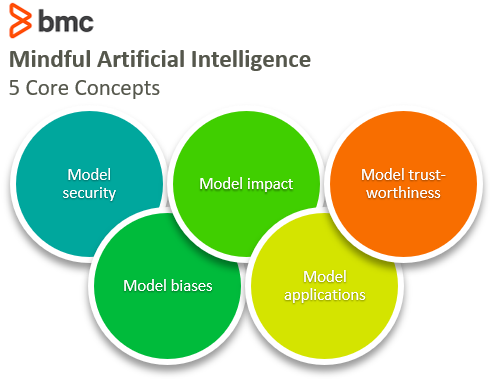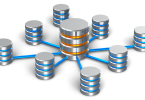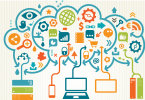We’ve all heard about AI taking over our jobs. Technology singularity and the rise of the robots, where machines will take over the world and assume the control of our lives.
Sure, these scenarios are common occurrences in Hollywood scripts, but academic and industrial research indicates that machine intelligence is far from reaching such an overarching and all-encompassing state, certainly nowhere near the point where it can overpower human intelligence in all forms.
So, where exactly does Artificial Intelligence stand today? What are the latest and greatest research breakthroughs and what to expect in the near future?
Let’s take a look.
Annual AI overview
Two tech investors, Ian Hogarth and Nathan Benaich, have been detailing the State of AI every year since 2018. They released the 2021 report in October this year.
Hogarth and Benaich take a macroscopic look at the global artificial intelligence playing field. They define AI as:
“ A multidisciplinary field of science and engineering whose goal is to create intelligence machines.”
The findings of the report are based on:
- Research: Notable new scientific discoveries and inventions.
- Talent: Availability and concentration of AI experts.
- Industry: Popular AI applications and business interests.
- Politics: The role of intelligent technologies toward economy, society and geopolitical dynamics.
- Predictions: Review of predictions from previous State of AI reports and new predictions for the near future.
The current state of AI
First, let’s see how the well the report fared with some of last year’s predictions. The following predictions materializing as expected…
Prediction: 10 trillion parameter dense model
Realized: Microsoft trained a model with 32 trillion parameters.
What this means: Advanced complex AI models are able to learn and represent high dimensional features, getting closer to human level intelligence.
Prediction: $1 billion IPO for AI-based drug discovery startups
Realized: NASDAQ IPOs: Recursion on April 16, 2021 and Exscientia on October 1, 2021.
Prediction: DeepMind will develop breakthrough drug discovery technology.
Realized: DeepMind released AlphaFold 2.
What this means: AI applications in healthcare are reaching maturity.
Prediction: NVIDIA acquisition of ARM will not materialize in 2021.
Realized: The acquisition is undergoing continued investigations prior to final regulatory approvals.
What this means: Large tech corporations are eager to build partnerships that will enable them to lead the industry focused on AI, computing, and chip design. Government authorities on the other hand are concerned about antitrust and anti-competition activities by major players.
The Future of AI
Now, let’s look at recent developments and new predictions from this year’s report. We’ll break it down by four categories:
Research
- Self-Supervised learning is the new state of the art in computer vision applications. Facebook AI SEER model trained on one billion Instagram images surpasses existing models with 84.2% accuracy on ImageNet data set.
- Self-Attention models are at the core of state-of-the-art AI models for speech recognition. For example, Conformer models and Point Transformers outperform previous model architectures for AI-based speech applications.
- Ideas from industrial research are diffusing into open source and academia research. For example, AlphaFold 2 has inspired inventions of large language models for generating functional protein structures.
- The gaming industry continues to bank on reinforcement learning research. MuZero is the latest project aiming to master complicated games such as chess and Atari without teaching rules to the AI models.
(Understand the difference between supervised & unsupervised ML.)
Talent
- Brazil and India are hiring three times more AI talent than in 2017—which means global populations are gearing up for increasing developments in the field.
- Chinese institutions are contributing the most to the AI research community in terms of volume of high-quality research.
- China is also outpacing STEM PhD growth in comparison with the US, particularly in AI based research domains.
- The Academic/Industry transition is gaining popularity. Many academics are increasingly moving to the industry, particularly working for the tech giants Google, Amazon, and Microsoft. This trend is on an exponential rise and compromising the student/teacher ratio as a result.
Industry
- Computer Vision techniques are under use to identify the most potent drug for each cancer patient. AI-based microscopy is used to identify the growth trajectory of cancer cells and is found to deliver statistically significant improvement in progression-free survival as compared to traditional prior therapy techniques.
- Real-time computer vision is being used to reduce injuries in manufacturing and production lines.
- Energy demand forecasting is increasingly using AI techniques to predict user demands and plan for energy distribution and supply accordingly. This is particularly useful to integrate green energy generation systems such as wind and solar power systems into the supply grid. These green systems do not generate energy with high predictability. Therefore, the supply of green energy is modeled using AI methods and optimized against unpredictable demand in real-time.
Politics
- The departure of Dr. Timnit Gebru from Google raised concerns around the AI research community. Dr Gebru was fired due to disagreement over a research paper that cited risks of bias and increased energy consumption of using large language models.
- 68% of AI researchers believe that AI safety research should be prioritized. In practice, less than 100 researchers in leading AI organizations work on this AI Alignment, a problem that deals with aligning AI goals to ethics and safety, among others.
(Use these 5 concepts for mindful AI.)

AI predictions for next year
Finally, here are some of the interesting predictions in the domain of Artificial Intelligence:
- DeepMind will continue to release new breakthrough AI systems in physical sciences.
- AI systems based on Reinforcement Learning will continue to improve and achieve improved performance on complex and feature-rich video games.
- Artificial General Intelligence (AGI) companies and teams will be formed to target hyper intelligence in specific industrial domains such as life sciences.
- ASML, the only manufacturing company supplying vital chip fabrication machines, is expected to reach a valuation of $500 billion dollars in 2022.
Let’s see how many of these will come to fruition over the next year.







